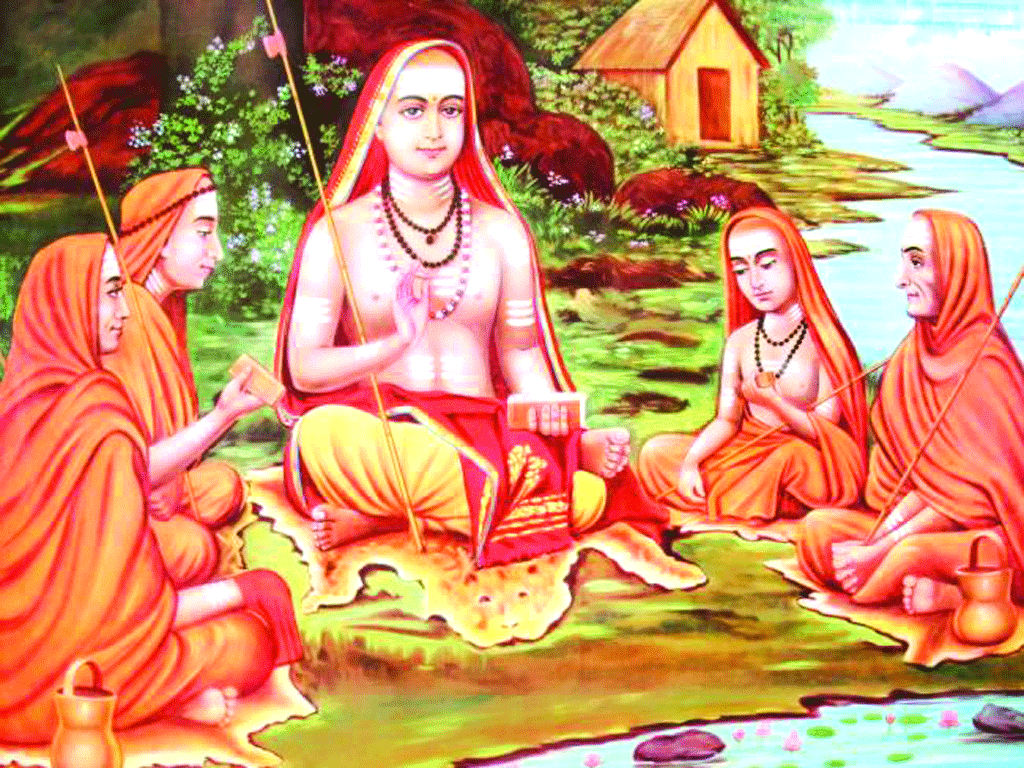It gives us the guidance we need to lead a quality life, says AJIT KUMAR BISHNOI
let me begin with the basics of the ashram system. Human life was assumed to be of 100 years. It was divided into four parts: Brahmacharya, grhastha, vanprastha, and sannyasa. These are the four ashrams of a human being or should be. Each ashram is of 25 years approximately with some flexibility in the number of years.
Beginning with the brahmacharya ashram, this spans from birth to till someone is 25 years old. This is the period for learning, which is important for two reasons. Human species is the master of the animal kingdom. It is supposed to control animals for our use and safety. The other reason is to prepare oneself for the future life, ie life in the other three ashrams. This learning is called brahmacharya, ie being trained to act as per the tenets of scriptures and now studying course books, which prepare us to become useful in the future life and support ourselves, ie earn enough money to be able to maintain ourselves and our families. God expects strict discipline from us in this ashram; this being the preparation for future life. Everything needed for this is taught here. One learns behaviour according to dharma in this ashram, which must be the yardstick of all acts throughout one’s life irrespective of any ashram.
Then, comes the grhastha ashram. This is marked by taking many responsibilities, the chief of which is of the family life. The human body is strong in this period, ie between 26th and 50th years of one’s life. In this ashram, one is supposed to work hard and earn enough for one’s family and that too according to dharma. This period is also meant for enjoying life according to dharma, ie kama and be passively aware of the ultimate need of a soul, moksha.
The third ashram is vanprastha. This is supposed to begin from the 51st year of one’s life when the human body begins to weaken. Now the younger generation is supposed to begin shouldering the responsibilities of the family. This is the gradual transition period from family duties to the last ashram of sannyasa, in which one is supposed to seriously work towards moksha. In this period, artha and kama should begin to lessen.
The last ashram, beginning from the 76th year of one’s life is essentially to pursue the goal of moksha; the main thrust is towards achieving it, being no longer involved in artha (earning) and kama (enjoying one’s senses). One is expected to give them up willingly keeping in mind the ultimate requirement of a soul, who one is.
The ashram system is life management. These are nicely arranged. To lead a quality life, we need proper guidance, and this system gives us general guidance. As detailed earlier, all ashrams have to be managed in different ways because bodily conditions are different and the purposes are also different.
Where do we generally go wrongIJ We give more emphasis to the micro level than to the macro management of life. We forget the larger purposes of life. let us remember that the divisions of a human life should be based on proper shram (labour). That is the reason it is called ashram system, ie a+shram=ashram. Here ‘a’ is for proper. This is how we can do all our duties as directed by lord Krishna in the verse no. 3.8 of the Bhagavad Gita. The ashram system was formulated for this reason only.
Here I must mention the different strengths we need to be able to do all our duties throughout our lives. These are: Atmabala (inner/spiritual strength), intellectual strength, mental strength and physical strength. In the first stage of life, the last three are crucial as they are in the second phase of one’s life. From the third stage, the strength of the soul become crucial, especial in old age when the challenges are bigger healthwise. The beauty of the ashram system is the amount of time one gets to gain the core strength before one desperately needs it in old age. Everything is nicely arranged. It is up to us to take advantage of it and lead a quality life.
Bishnoi is a spiritual writer and can be reached at spiritual@ajitbishnoi.com


























